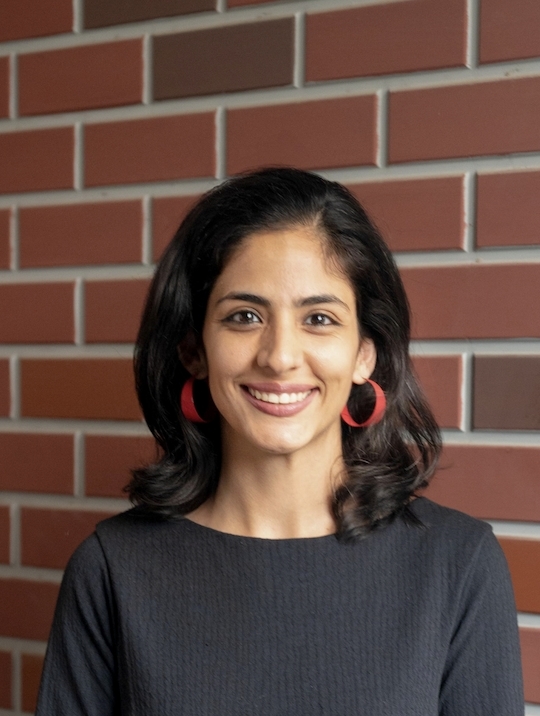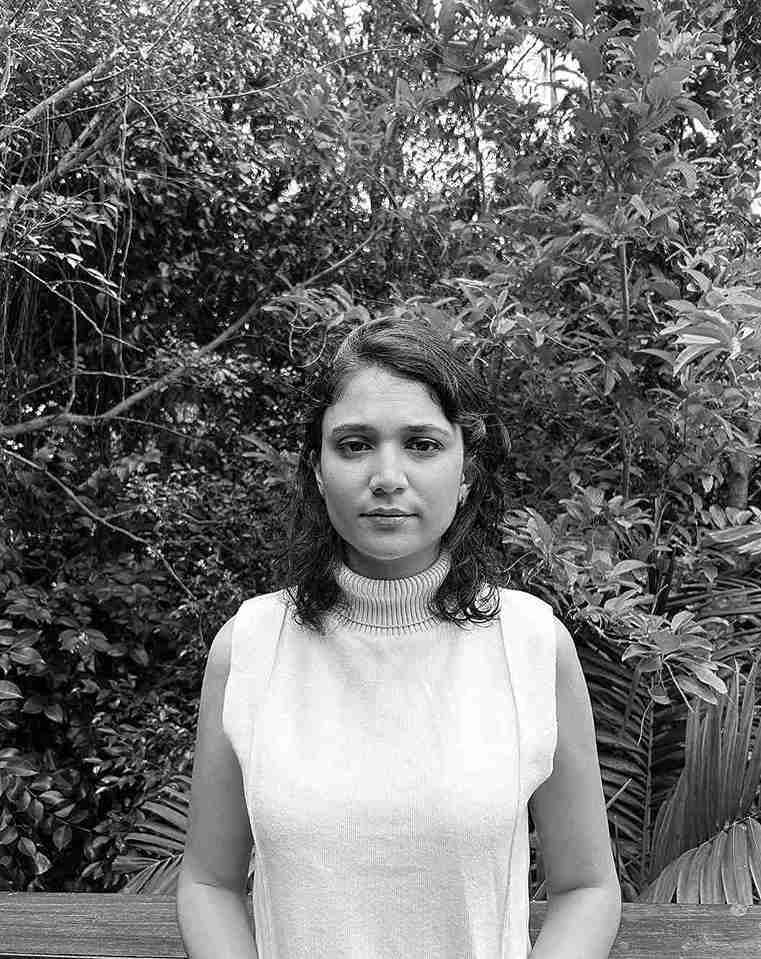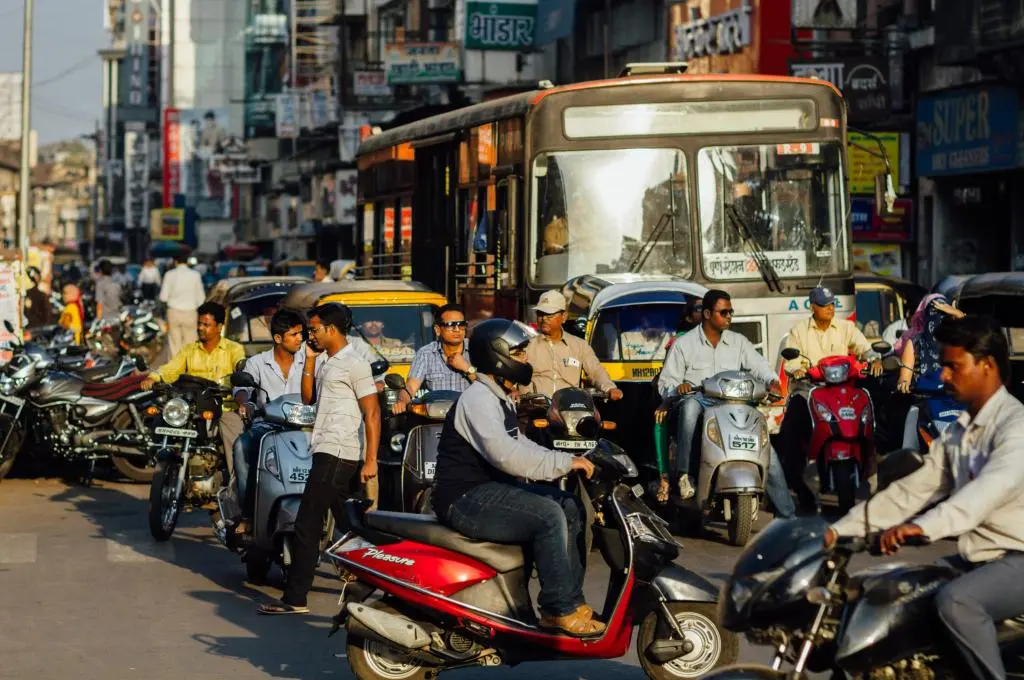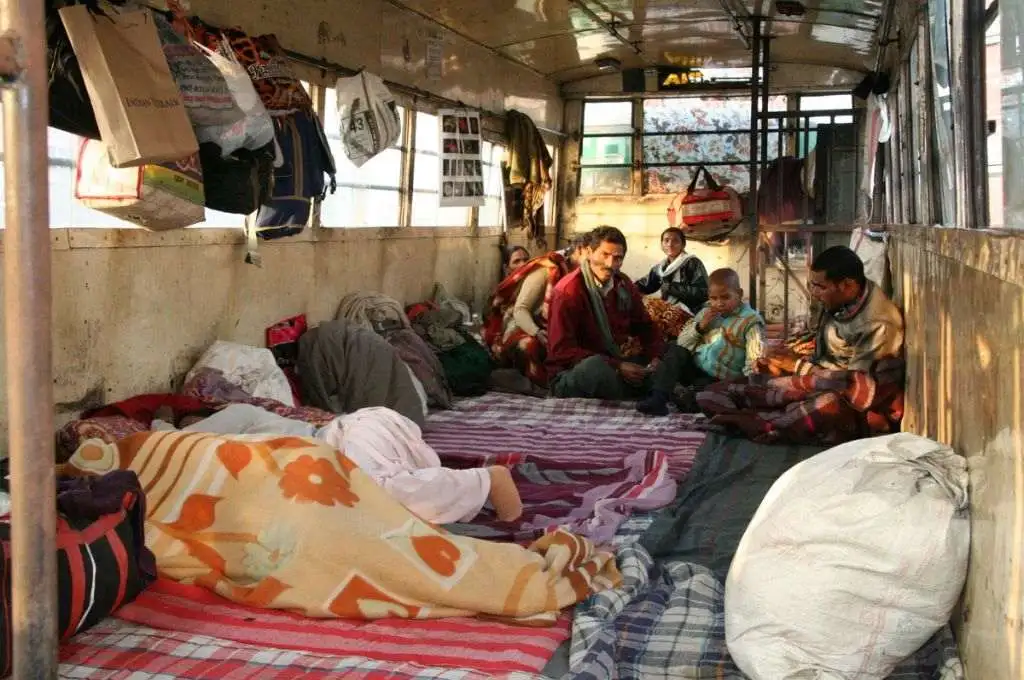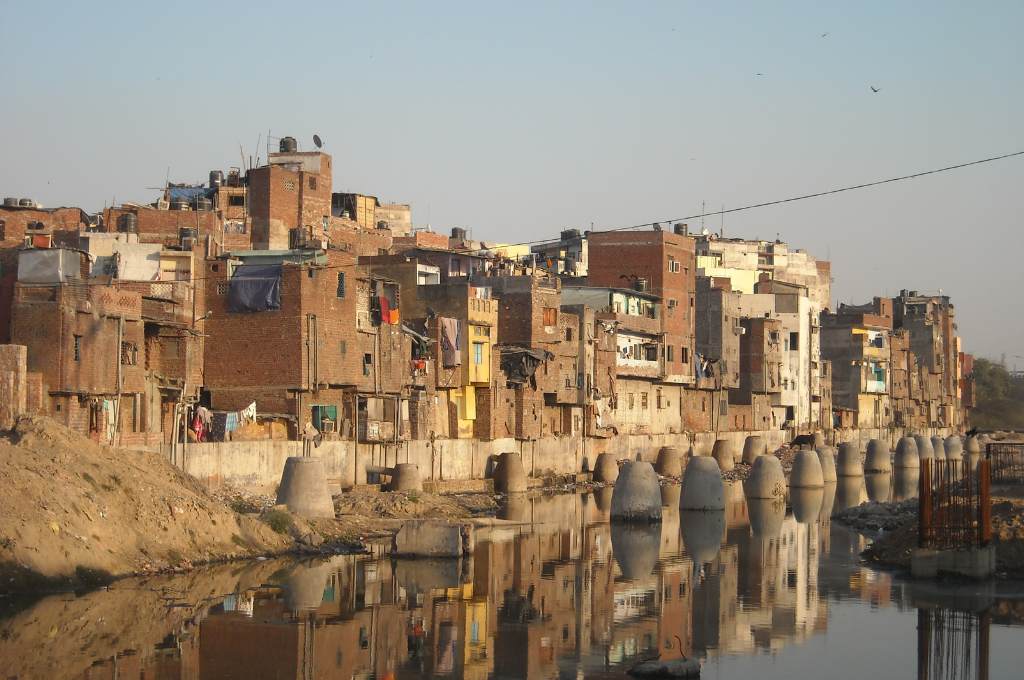You travel within Delhi from point A to point B using public transport, covering the last kilometre on foot. Unsure of the bus timings, you spend 40 minutes waiting for it to arrive. You board the bus and hop off at another bus stop before walking to your destination. During this journey, you navigate uneven footpaths; jump over open drains; stroll past erratically placed street lights, electric vehicle (EV) stations, and public toilets; encounter vendors; and walk across overhead bridges, metro stations, non-demarcated pedestrian crossings, and inaccessible road dividers. Before you know it, you have unknowingly experienced the outcome of many domains of governance over a short distance.
Although we are often unaware of its presence in our day-to-day experiences, governance is not an invisible force. It is tangible, manifesting in Delhi’s diverse public infrastructure, which is governed by a complex network of departments and ministries with varying levels of authority. During elections, our engagement with governance becomes more pronounced.
With the Delhi elections around the corner, the question is how 15.5 million eligible voters can not only influence local governance but also shift the trajectory of urban development and social, economic, and environmental sustainability.
There is a growing call for a more systemic approach to the right to a better quality of life in urban areas. The future of the city hinges on adequate state provisions for comprehensive mobility infrastructure, street safety, inclusive public spaces, and gender-responsive planning.
The Sustainable Mobility Network, a pan-India network of more than 40 organisations working to decarbonise the mobility sector, is attempting to make urban governance architecture less daunting. These organisations—which include nonprofits, collectives, campaigns, and movements—have come together to articulate a shared vision for Delhi through the Dilli Charter. The charter represents a collective aspiration for a Delhi that is accessible, inclusive, and sustainable.
Moving beyond ‘Roti, Kapda, Makaan’
The Dilli Charter was developed through extensive consultations with more than 30 urban mobility and air pollution experts and a broad range of public transport users to ensure that it reflects the voices and aspirations of Delhi’s citizens.1 Following comprehensive secondary research by City Sabha, Raahgiri Foundation, Safetipin, and Young Leaders for Active Citizenship (YLAC), the charter was presented for feedback to external experts, including urban planners, environmental researchers, academics, and civil society representatives. This feedback was gathered through a group public consultation in early January, followed by a series of individual discussions. It was then circulated via email and social media among Delhi residents and the general public. This was done to ascertain that the Dilli Charter serves as a bridge between Delhi’s citizens and its decision-makers, building on the significant work undertaken by the Master Plan for Delhi 2021 and the Main Bhi Dilli campaign.
After more than 75 years of independence, the narrative must shift beyond the basic needs of ‘Roti, Kapda, Makaan’.
State elections, held every five years, bring hope as residents vote for leaders who can address local issues. These elections offer a critical opportunity to voice concerns on governance, public services, and accountability. Key issues such as water, electricity, healthcare, pollution, housing, jobs, and welfare schemes dominate the agenda. However, after more than 75 years of independence, the narrative must shift beyond the basic needs of ‘Roti, Kapda, Makaan’ (food, clothing, and housing). While these are undeniably essential, today’s citizens are looking for a nuanced, contextual vision that addresses prevailing issues such as quality of life, economic prosperity, and environmental sustainability. Unfettered consumption, pollution, and inequality make it necessary to consider every resident’s quality of life. This means moving beyond short-term promises and focusing on long-term solutions, such as mobility infrastructure.
How people move across the city is central to how it develops. Today, Delhi boasts the longest metro system in the country, along with one of the largest bus fleets in India, including the second-largest electric bus fleet. It was also the first state government to introduce an aggregator policy for ride-hailing services. However, the question remains: Is every person—regardless of gender, age, ability, profession, and income—able to navigate the city seamlessly, particularly using non-motorised or public transport every day and during climate extremes? The simple answer is no.
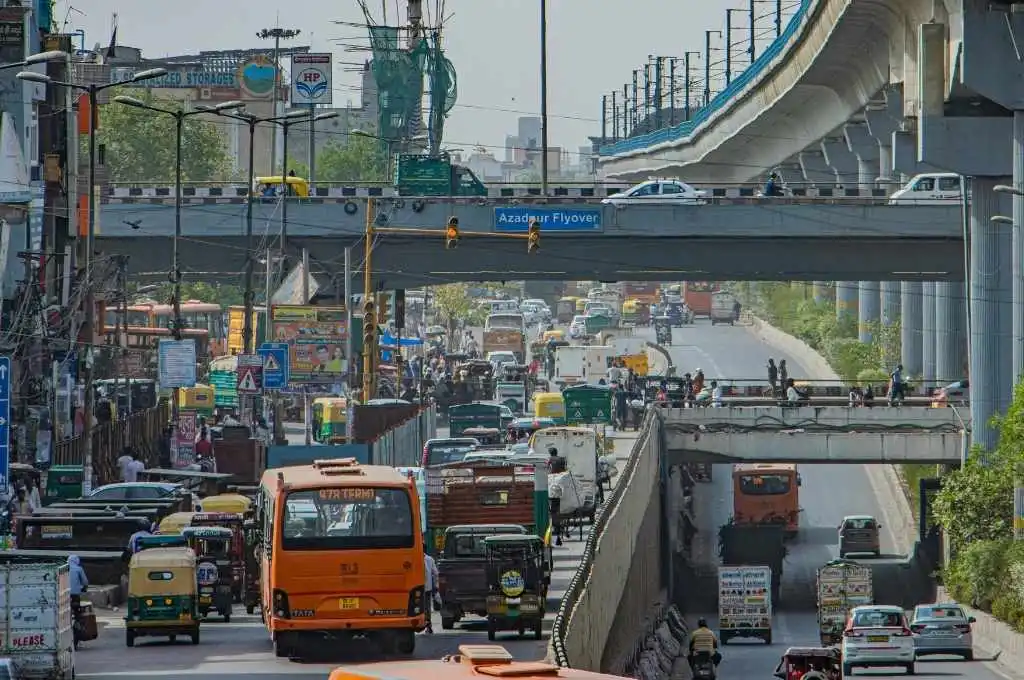
What does the Dilli Charter entail?
The charter outlines an ambitious vision for transforming Delhi’s mobility infrastructure, focusing on inclusivity, sustainability, safety, and governance. Its key points include:
1. Expanding the infrastructure and making it greener
Core initiatives comprise expanding the bus fleet to 20,000 buses, prioritising zero-emission vehicles, and improving last-mile connectivity via the Mohalla Bus Scheme,2 particularly in underserved and resettlement areas. The plan also emphasises affordable, frequent public transport such as e-rickshaws and minibuses, as well as developing an integrated, continuous, and expansive network of non-motorised transport and bus lanes, cycle stands, shaded pedestrian pathways, metro stations, bus shelters and stops, and other public transit hubs.
2. Promoting inclusion and safety
The charter mandates that all public transport systems comply with the Rights of Persons with Disabilities Act 2016 and gender-responsive principles. This includes ensuring accessibility and safe transport for women and marginalised communities, and creating gender-sensitive policies such as night-time bus halts for women. It also underlines the need for gender representation in the workforce and enhanced safety features, including CCTVs and distress buttons on public buses.
3. Tackling air pollution
Transport emissions are a major contributor to Delhi’s air pollution crisis. To address this, the Dilli Charter advocates for the promotion of walking, cycling, and EVs. It proposes the establishment of low emission zones (LEZs) in pollution hotspots and sets a goal for a 100 per cent EV transition by 2030, with solar-powered charging stations near transit hubs. Additionally, the plan supports integrating non-motorised transport into the broader transport network, so that urban mobility is less car-dependent and more people-centric.
4. Strengthening governance and accountability
Different aspects of Delhi’s infrastructure are administered by different governance actors with overlapping responsibilities. This complicates not only the division of power between levels of government but also responsiveness and accountability.
The charter advocates for the publication of government data to clarify how the funds collected from fines and parking are being used.
The Union Government oversees spatial planning, land, housing, and law and order; the Delhi government manages water, electricity, health, transport, and revenue; the Municipal Corporation of Delhi (MCD) handles local tasks such as waste disposal, property tax, and birth and death registration; and the Delhi Development Authority (DDA) plays a crucial role in city planning and development. This fragmented structure, combined with unclear accountability and poor coordination, hinders effective service delivery in a resource-constrained environment.
The charter calls for better coordination among transport departments through the establishment of a Unified Metropolitan Transport Authority (UMTA). It also advocates for the publication of government data to clarify how the funds collected from fines and parking are being used. Additionally, it proposes the establishment of parking management area plans to alleviate congestion, and advocates for enhanced enforcement of policies. These comprehensive measures aim to create a safer, more efficient, and equitable transport system for all Delhi residents.
Now, let’s revisit the first scenario from this article. Imagine the same commute but with a well-planned, efficient system in place: a reliable, on-time bus service with women drivers and marshals ensuring safety, storage facilities for street vendors and construction workers, and panic buttons for emergencies. Upon exiting, you find well-lit streets with clear signage and bus routes. Public toilets and crèche facilities are integrated into the bus shelter. Pedestrian-only footpaths, separate cycle lanes, and designated vendor spots align seamlessly with thoughtful urban infrastructure.
A charter, a manifesto, or even a set of demands will not turn this vision into a reality overnight. However, what such an effort can do is pave the way for a more accessible, safe, and inclusive urban experience for residents through a collective, informed citizenry. Civil society organisations in the mobility ecosystem as well as the media have access to this charter, and they can use it to hold our government accountable. The Sustainable Mobility Network partners have been engaging with various political leaders to ensure a large-scale buy-in and acceptance of the charter, regardless of which government leads Delhi.
—
Footnotes:
- These consultations were conducted with organisations such as Public Transport Forum, OMI Foundation, SaveLIFE Foundation, The Urban Catalysts, CEEW, and People’s Resource Centre.
- The Mohalla Bus Scheme aims at providing feeder bus services to Delhi residents near their homes using 9 metre–long electric buses. However, it is yet to be operationalised.
—
Know more
- Access the complete Dilli Charter here.
- Read this document about streets that prioritise safety, convenience, and comfort of diverse form of users.
- Listen to this podcast about what makes a good city.
Do more
- Reach out to the Sustainable Mobility Network at sustainablemobilitynetwork@gmail.com to share your reimagination of Delhi.
- Endorse the campaign for better sustainability infrastructure here.


